Low-Stress Trailer Loading
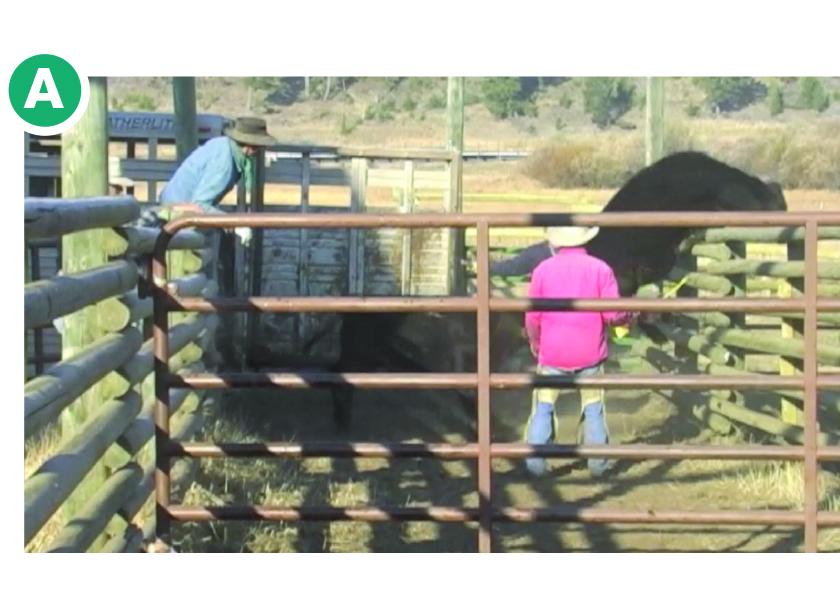
As with loading out, trailer loading is another production event that can be high stress on both the animals and people, but it needn’t be that way.
During conventional (i.e., high stress) trailer loading, we typically see unwilling, confused, frightened animals being forced onto trailers. There’s too much help, noise, pressure, electric prod use and too little understanding, empathy and concern for the animals.
It Starts With Mindset
The conventional mindset is the cattle aren’t going to want to go into a trailer so we’ll have to make them, typically by using fear and force. Yes, it generally works — we get ‘er done, right — but at what cost in terms of stress-related shrink, performance loss and degraded carcass quality, let alone frustration?
For instance, in Figure A (above), we see a calf that was being forced into a waiting trailer go totally off-line and flip into survival mode. What if that $1,000 calf had broken a leg?
However, if we handle our animals properly, they should willingly walk into a trailer like we see in Figure B (below). Because many of us haul a lot of animals in trailers, think how nice it would be if it was this easy on them and on us.
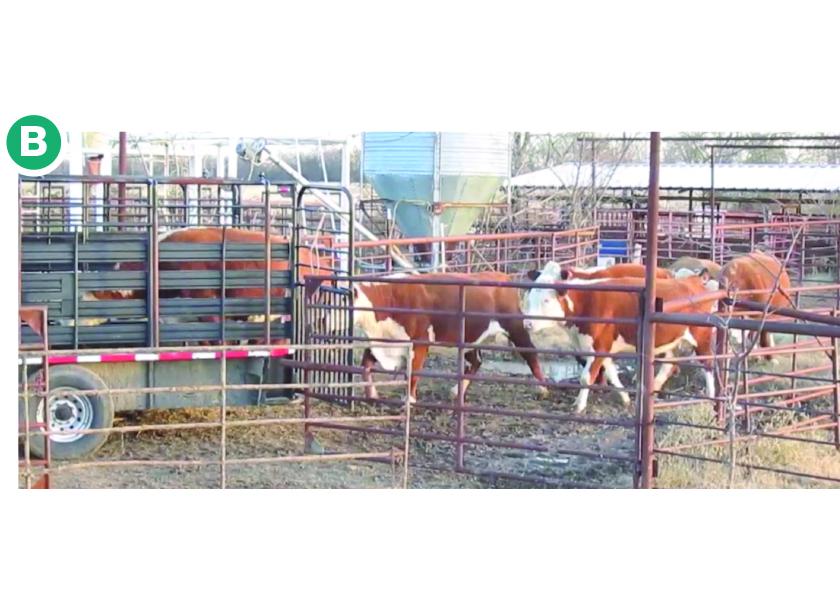
To do this, however, takes an entirely different mindset. We have to understand cattle will willingly walk into a trailer if we present it to them right and make our idea their idea, if we work with their minds instead of their bodies and take a psychological approach instead of a physical approach.
We also have to understand that cattle, as Bud Williams maintained, are not necessarily afraid of the trailer as many people believe. This was proven to me one day when I trailered out, parked inside a mountain pasture, then rode off. When I returned, there were a bunch of yearlings congregated around the trailer (Figure C), and when I got up to the trailer there was one inside and others lined up to step in (Figure D). So, they really aren’t afraid of the trailer after all, it would seem.

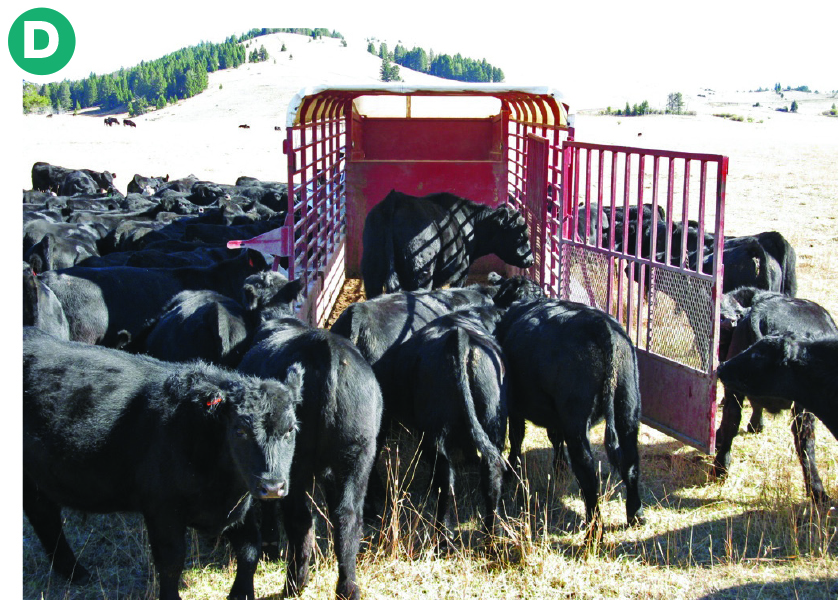
It’s The Handling, Not The Trailer
Something that we’ve witnessed many times is one person can have a great deal of difficulty loading cattle into a trailer (e.g., cattle balking, turning back, running back out), but someone else can load the same cattle into the same trailer without incidence. The reason is the first person handles the animals conventionally; that is, believing the animals will not want to go into the trailer, the handler uses coercive measures (e.g., yelling, a fiberglass prod, paddle, or hot shot) to make them go in the trailer.
The second person understands the animals aren’t necessarily concerned about going in the trailer; what they’re concerned about is how we get them in the trailer. This person understands the principles and employs the proper techniques of low-stress livestock handling (reviewed in prior issues of Drovers magazine) and works with the animals in such a way as to make his or her idea (i.e., to go into the trailer) the animals’ idea, so they do so willingly.
Low-stress trailer loading depends on how we handle the animals at every stage of the process, beginning with first contact. If we do it properly, we’ll keep them in a normal frame of mind, with their minds going forward, and they will want to go into the trailer. If done improperly, we will create resistance in the animals, and they will want to go back.
Trailer Loading Off An Alley
It’s common practice to load cattle into a trailer that’s backed up to an alley, either on the end or a side gate. In either instance, the first option for loading animals is to simply drive them into the trailer but in a way that clearly communicates to them what you want, and that means using good technique. In this instance, that technique will be the zigzag (i.e., the straight-line, forward-angle pattern), which cattle willingly move away from (Figure E). The zigzag also prevents you from falling in directly behind and getting into animals’ blind spots, which can divert their attention to you and get them wanting to go back.
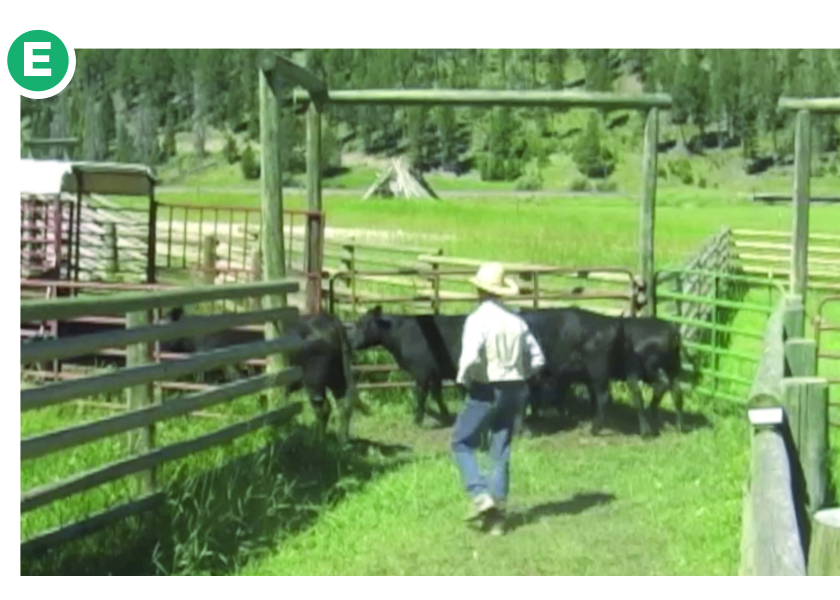
If the animals are resistant, instead of resorting to coercive measures, go for a mind change. How? Let them go back up against the nearest cross gate, pressure them up against it until they want to come out — we think of it in terms of putting them in “cow jail” until they want to be released — then step aside and let them come by (Figure F). When they decide to come out you’ve made your idea their idea, which is to go get in the trailer. When they all come out, fall in behind and drive them right into the trailer.
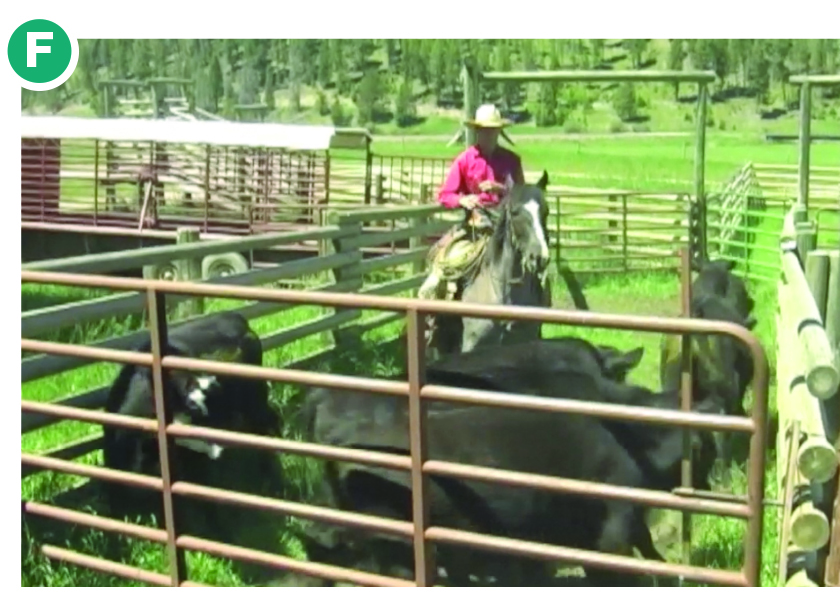
Trailer Loading Off A Rope
Give most cowboys a horse, a rope, a cow and tell them to load it, what are they going to do? They’re going to do what they’ve been taught to do and often that is to rope the cow and drag it in. Been there done that. But why drag them in when they have four legs and can walk in themselves? It’s certainly a lot easier on the animal, the horse and equipment.
The basic technique is to rope the critter by either the neck or one hind leg which gives you some control. Then, by making the right thing easy (i.e., looking at or moving toward the trailer) and the wrong thing difficult (i.e., looking away from or moving away from the trailer), you can eventually make your idea the animal’s idea, which is to go into the trailer (Figure G). So, every time the animal looks away or tries to move away from the trailer, apply a little pressure to get it to look at or move toward the trailer. When it does, release a little pressure to reward it and let it know it’s doing the right thing. Then ask for a little more and repeat.
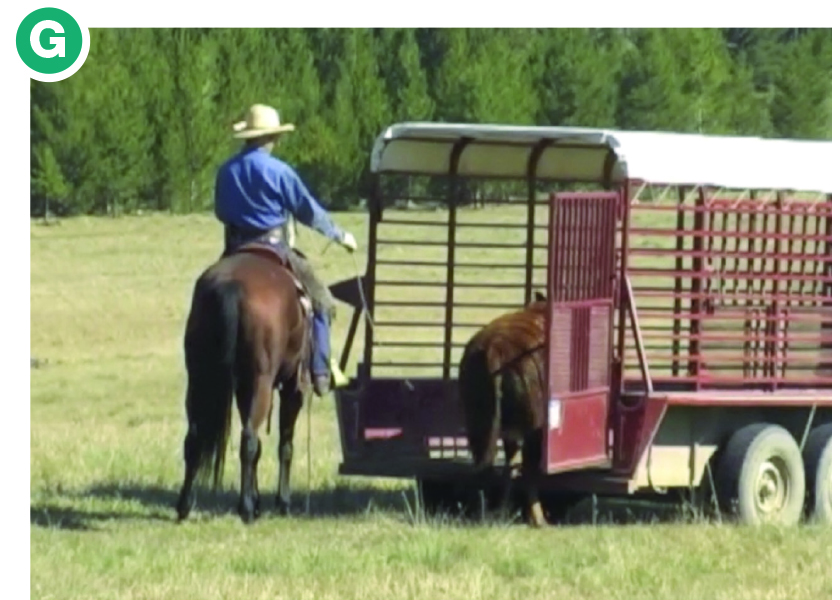
Trailer Loading Without A Rope
A rope is helpful but not necessary. By following the above-described procedure, you can frequently walk an animal into a trailer in a matter of minutes (Figure H).
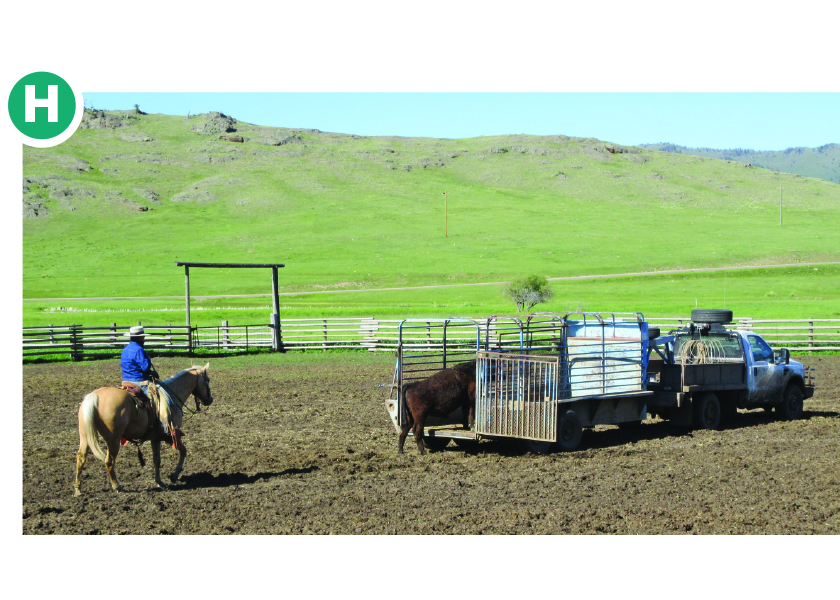
Trailer Loading On Foot
But we don’t even need a horse or a rope; it can be done on foot (Figure I).

Conclusion
As with every other production event, the better we handle cattle during trailer loading, the easier it will be for them and for us.







